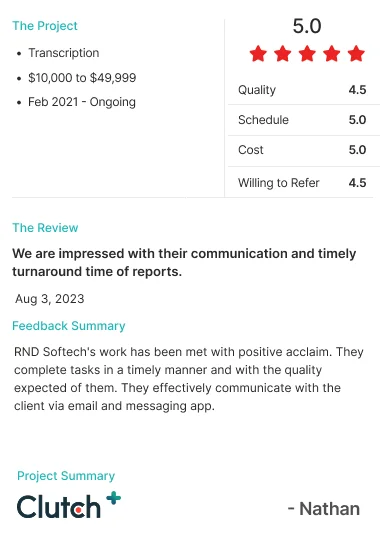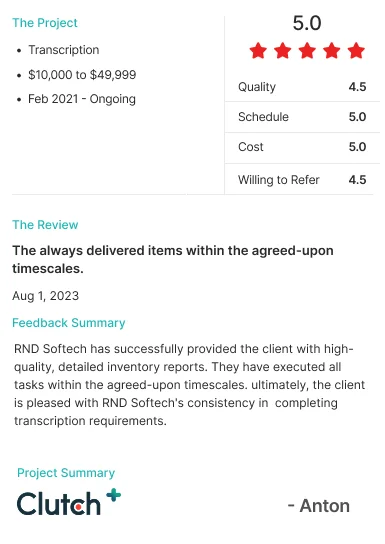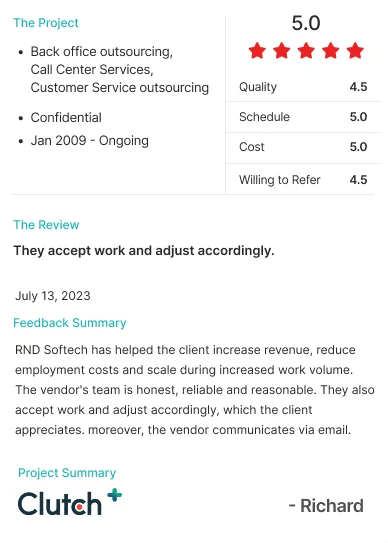What is data annotation for machine learning?
Data annotation for machine learning involves tagging or labeling data, making it understandable for algorithms. By annotating images, videos or text, we enable machine learning models to recognize patterns and make predictions. For instance, annotated images train models to distinguish between objects, while annotated text enables natural language processing (NLP) models to understand sentiments, keywords, or intent.
Why quality is essential in data annotation for machine learning?
Although having extensive datasets can be beneficial, quality always outweighs quantity in data annotation for machine learning. High quality, accurate annotations help models learn effectively by providing clear and precise examples. In the absence of quality annotation, models are prone to errors, reducing their effectiveness in real world applications.
How quality annotations improve model performance?
Here's how quality impacts data annotation for machine learning:Accuracy and Precision
Accurate annotations train models to produce more clear predictions.
Reduced Bias
Quality annotation reduces biases;make sure models learn correctly and fairly.
Efficient Training
When annotations are accurate, models require lesser training cycles, as they quickly learn from well labeled examples.
For instance, a facial recognition model trained on lesser, well annotated images frequently performs better than one trained on a large but poorly labeled dataset.
Challenges in verifying quality data annotation for machine learning
High-quality data annotation for machine learning requires dedicated efforts:
-
Specialized Annotators
Expert annotators are essential, particularly in complex domains such as medical imaging or autonomous driving.
-
Rigorous Quality Control
Consistent quality checks are important to maintain annotation standards.
-
Advanced Tools
Usingsmart annotation tools that support collaborative reviews and quality metrics can improves annotation quality.
The importance of quality over quantity across applications
Healthcare: In medical imaging, a well annotated dataset is pivotal. A model trained with quality data annotation makes reliable predictions, frequently affecting lifesaving decisions.
-
Autonomous Vehicles
Precise data annotation for road object detection, road recognition and pavement detection is important for safety in autonomous vehicles.
-
Natural Language Processing
Quality annotations make sure NLP models precisely interpret language subtleties, producing reliable insights for sentiment analysis, customer feedback and more.
Data annotation services
Our comprehensive AI data annotation services are designed to support businesses and organizations in training machine learning models, improving AI algorithms and creating high-quality datasets. We offer a wide range of data annotation solutions, including but not limited to:
Image Annotation
-
Object Detection: Labeling objects in images with bounding boxes, polygons or points.
-
Semantic Segmentation: Pixel-level labeling for identifying boundaries and regions in images.
-
Image Classification: Categorizing images based on predefined labels.
-
Keypoint Annotation: Marking specific points on objects, such as human joints or facial features.
-
Landmark Detection: Annotating unique landmarks, such as vehicles or building corners.
Video Annotation
-
Object Tracking: Labeling and tracking objects across video frames.
-
Action Recognition: Annotating specific actions or behaviors in video sequences.
-
Frame-by-Frame Analysis: Annotating important events or actions in each frame.
-
Activity Classification: Categorizing activities within video content, useful for surveillance or sports analysis.
Text Annotation
-
Named Entity Recognition (NER): Tagging entities such as people organizations, locations, dates, etc.
-
Sentiment Analysis: Classifying the sentiment expressed in text (positive, negative, neutral).
-
Part-of-Speech Tagging: Labeling words based on their syntactic role (noun, verb, adjective, etc.).
-
Text Classification: Categorizing text into predefined categories (e.g., spam vs. non-spam, news topics).
-
Machine Translation:Annotating text for translating between languages.
Audio Annotation
-
Speech-to-Text: Transcribing audio recordings into text.
-
Speaker Identification: Labeling different speakers in an audio file.
-
Sentiment Analysis: Analyzing the tone and sentiment in spoken language.
-
Keyword Spotting: Detecting and tagging specific words or phrases within audio data
Conclusion: Prioritizing quality in data annotation for machinelearning
The emphasis on quality in data annotation for machine learning cannot be overstated. Although it might be tempting to focus on accumulating large amounts of data, accurate and high quality annotations are the foundation of a successful model. Quality annotation allows models to learn efficiently and perform reliably, making it the foundation of powerful machine learning. By utilizing an AI data annotation service, businesses can confirm that their datasets are precise, bias free and reliable, eventually optimizing the performance of their models.
Author
Article written by
Anbarasu Natarajan
AGM - Business Development
Anbarasu Natarajan, leverages his Marketing experience in initiating new BPO tie-ups, scaling up remote Back office Operations, Building Teams and Talent enablement. An MBA with 20+ years of experience among multiple industries, he leads the Business Development and CRM initiatives for RND OptimizAR's 20+ service verticals.














